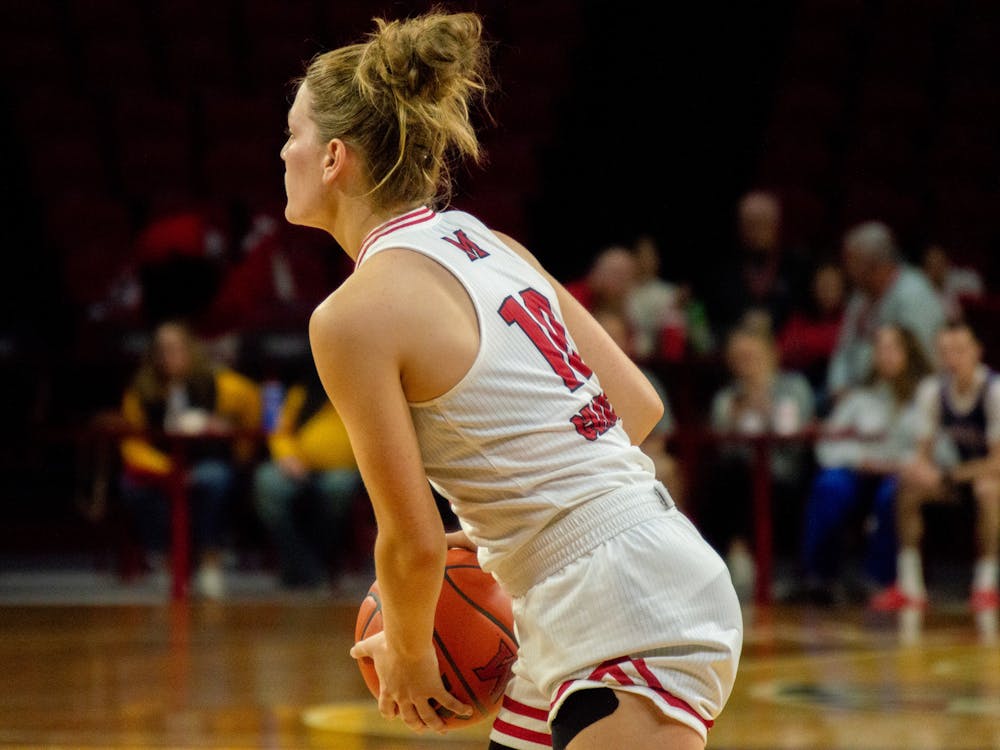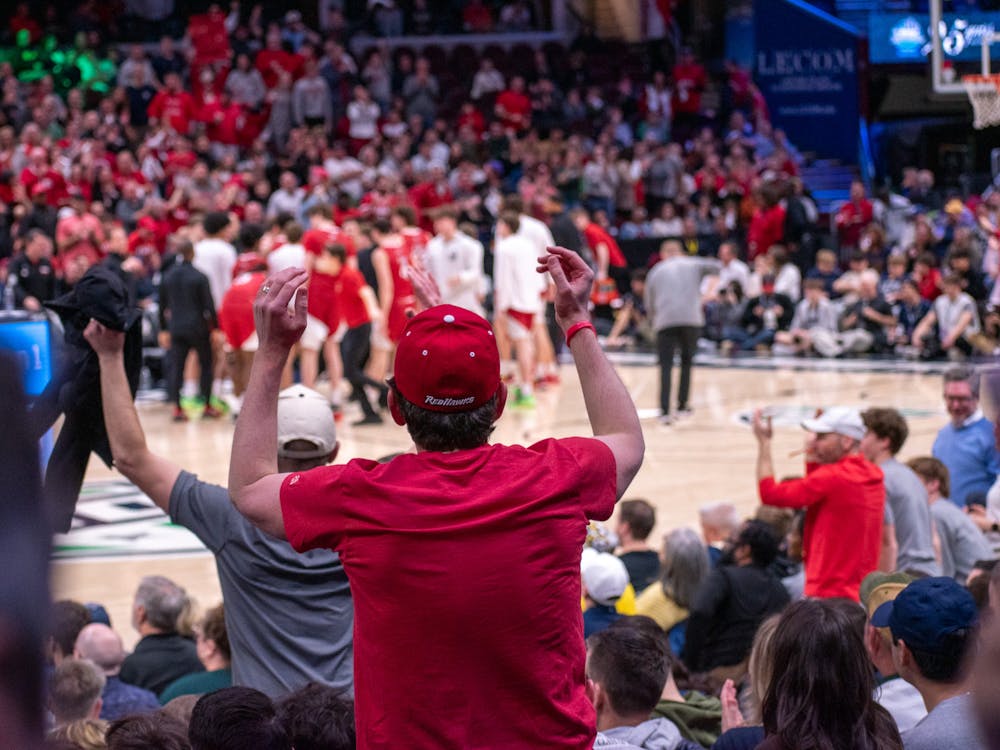Lined up across the blue line at Coach Cady Arena, listening to the Miami University hockey pep band’s rendition of the national anthem, the RedHawks stood in preparation for the home opener.
Eighteen returners, 12 new players and four new coaches make up this year’s roster – a clean slate for a program looking to earn back its prestige after nine straight losing seasons. Here are four takeaways from the first two weeks of the RedHawks’ 2024-25 campaign.
New team, new style
Last year’s roster, led by head coach Chris Bergeron and captain Jack Clement fought hard to play the game the right way, yet it was never enough to turn the corner.
This year’s roster does away with the choppiness and hyperfocus to do things by the book. The RedHawks seem to play faster and much more freely. Miami’s willingness to play the transition game is noticeable, and each line can move up and down the ice well.
Eager to attack on the forecheck, the RedHawks seemed to control the pace against Alaska Anchorage last weekend, a rarity for Miami teams in recent memory.
One thing to be wary of is that in both first periods last weekend, the RedHawks were held to under four shots on net.
Early standouts
After Saturday’s game, it became obvious that Boston College graduate transfer and former Avalanche draft pick Colby Ambrosio is a difference-maker. Outside of already notching seven points in his first four games, he’s someone that fans only need to watch skate for a few seconds to understand how skilled he is. His line, with fellow offensive talents Johnny Waldron and Matt Choupani, will be fun to watch this year.
Additionally, it is important to notice who gets trusted during the crucial moments at the end of a close game like Friday’s; It was Ambrosio and junior forward Max Dukovac on the ice for most of the final defensive zone stand.
It’s impressive how technically sound sophomore goaltender Bruno Bruveris plays. It’s easy to get distracted by how efficiently he moves between the pipes. One bad angle shot snuck past him on Friday, but he has compiled a .933 save percentage so far.
If he continues to play like he did last year against powerhouse teams like North Dakota or Denver, Miami has its star goalie.
Enjoy what you're reading?
Signup for our newsletter
Special teams
Miami's six powerplay goals lead all Division I teams in total points per game, and their power play percentage (.286) is tied for eighth. It’s still very early, but this is a great sign. Both power play units have contributed, and it’s clear they have a chemistry that some teams spend all year struggling to find.
The somewhat aggressive Miami penalty kill successfully defended a potentially game-defining five-minute major on Saturday. Hockey fans can appreciate the RedHawks’ interesting formation, which utilizes the high forward taking a route from the top of the umbrella outward to press the flank down the wall to dead ice.
Winning takes time
There isn’t a magical spell to success. As much as these wins feel good, two games against Alaska Anchorage don’t necessarily project success in conference play. Last year’s team dominated the home-opening weekend against Canisius College, and then won only a single conference game all year.
However, Miami’s history shows that the team can turn a losing program into a nationally dominant one. Head coach George Gwozdecky took a program that went 5-29-3 in 1990-91 to the NCAA tournament in 1992-93 after going 27-9-5 and placing first in the Central Collegiate Hockey Association.
“It was really difficult,” Gwozdecky said. “The idea of being able to have a quick fix just doesn’t work. You’re not going to turn the program around in one season or with one recruit. [My staff] was able to identify not only good players but the right players.”
Whatever happens this season, RedHawks fans need to trust that head coach Anthony Noreen and his staff are working to recruit the right players so that the program can turn around.




